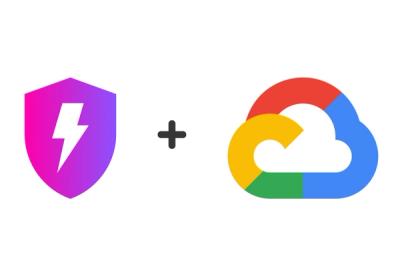
Security News
High Salaries No Longer Enough to Attract Top Cybersecurity Talent
A survey of 500 cybersecurity pros reveals high pay isn't enough—lack of growth and flexibility is driving attrition and risking organizational security.
luopaieasyjs
Advanced tools
SelenaJS is an easy-to-use npm package designed to help programmers configure and write tests with Selenium and JavaScript.
SelenaJS is a lightweight testing framework for Node.js, designed to simplify the creation and execution of end-to-end tests. With SelenaJS, you can easily define and organize your tests, and execute them in a reliable and repeatable way.
To use SelenaJS, you need to install it through npm. Open a terminal window and type:
npm install selenajs
To run SelenaJS or any Selenium test/automation you may need to install a driver compatible with your browser to allow it to be automated.
To use SelenaJS in your project, you need to create one or more tests and add them to a Selena instance. You can then call the run() method to execute the tests in the instance.
Here's an example of how to use Selena to execute a simple test:
import { Test, Selena } from "selenajs";
const test = new Test({
name: "Example Test",
category: "Example Category"
});
test.createTest(async (driver, passed, failed) => {
await driver.get("https://www.google.com");
const title = await driver.getTitle();
if (title === "Google") {
passed();
} else {
failed(`Unexpected title: ${title}`);
}
});
const selena = new Selena();
selena.addAllTests([test]);
selena.run();
In this example, we create a new Test object and give it a name and category. We then define a test function that uses a Selenium WebDriver instance to navigate to https://www.google.com and retrieve the page title. If the title is "Google", the test is considered to have passed. Otherwise, the test fails with an error message.
We then create a Selena instance and add the test to it using the addAllTests() method. Finally, we call run() to execute all the tests in the instance.
To create a new test in Selena, you need to create a new Test object and give it a name and category. You can then define a test function that uses a Selenium WebDriver instance to perform one or more actions, and call the passed() or failed() methods to indicate whether the test has passed or failed.
Here's an example of how to create a new test in Selena:
const test = new Test({
name: "Example Test",
category: "Example Category"
});
test.createTest(async (driver, passed, failed) => {
// Use the Selenium WebDriver instance to perform actions here
// Call passed() if the test passes, or failed() if it fails
// If failed() is not called, the test will be considered passed
});
Properties that you can pass into Test constructor:
name: string: A name to identify your test. - Requiredcategory: string: A category name for grouping the test together with other tests.config: object: A custom object to be consumed in your test. You can get this object using the method Test.getConfig().builder: Builder: A Builder instance for selenium-webdriver.
new Builder().forBrowser('chrome')..build() method because this method will be automatically called when the test starts running.Methods that you can use with you Test instance:
Test.createTest(test: TTestFunction): void: This method is used to create a new test into your Test instance.
test.createTest(async (driver, passed, failed) => {
await driver.get("https://www.google.com");
const title = await driver.getTitle();
if (title === "Google") {
passed();
} else {
failed(`Unexpected title: ${title}`);
}
});
Test.runTest(): Promise<TLog>: This method can be used to run this single test.Test.getLog(): TLog: Get the log after the test has finished.Test.getConfig(): object: Get the config object that has been passed in Test constructor.Test.getCategory(): string: Get the name of the category of this test.Test.getName(): string: Get the name of this test.To run your tests, you need to create a new instance of Selena object. This object provides a CLI that makes it easy to manage your tests. You can add all tests inside it using the method .addAllTests().
Ex:
import { Test, Selena } from "selenajs";
const test = new Test({
name: "Example Test",
category: "Example Category"
});
test.createTest(async (driver, passed, failed) => {
await driver.get("https://www.google.com");
const title = await driver.getTitle();
if (title === "Google") {
passed();
} else {
failed(`Unexpected title: ${title}`);
}
});
const selena = new Selena();
selena.addAllTests([test]);
selena.run();
The CLI provided by Selena allows you to run a single test, all tests, or tests from a specific category. Once the tests have finished running, Selena provides a report that displays how many tests were executed, how many tests passed, and how many tests failed.
Methods that you can use with you Selena instance:
Selena.addTest(test: Test): void: Add a single test into your Selena instance.Selena.addAllTests(tests: Test[]): void: Add multiple tests into your Selena instance.Selena.getLogs(): TLog[]: Get the log from all tests after it has finished.Selena.run(): void: Initiate your tests, providing a CLI.Using SelenaJS, you can streamline your testing process by running multiple tests at once and quickly identifying which tests have passed or failed. The report provided by Selena helps you to pinpoint any issues or bugs in your code and make necessary changes to improve your software's functionality.
Thank you for considering contributing to SelenaJS! We welcome any contributions, whether they be bug fixes, feature requests, documentation improvements, or anything in between.
To contribute, please follow these steps:
We appreciate your contributions and hope to work with you soon!
FAQs
SelenaJS is an easy-to-use npm package designed to help programmers configure and write tests with Selenium and JavaScript.
The npm package luopaieasyjs receives a total of 1 weekly downloads. As such, luopaieasyjs popularity was classified as not popular.
We found that luopaieasyjs demonstrated a healthy version release cadence and project activity because the last version was released less than a year ago. It has 1 open source maintainer collaborating on the project.
Did you know?

Socket for GitHub automatically highlights issues in each pull request and monitors the health of all your open source dependencies. Discover the contents of your packages and block harmful activity before you install or update your dependencies.

Security News
A survey of 500 cybersecurity pros reveals high pay isn't enough—lack of growth and flexibility is driving attrition and risking organizational security.

Product
Socket, the leader in open source security, is now available on Google Cloud Marketplace for simplified procurement and enhanced protection against supply chain attacks.

Security News
Corepack will be phased out from future Node.js releases following a TSC vote.